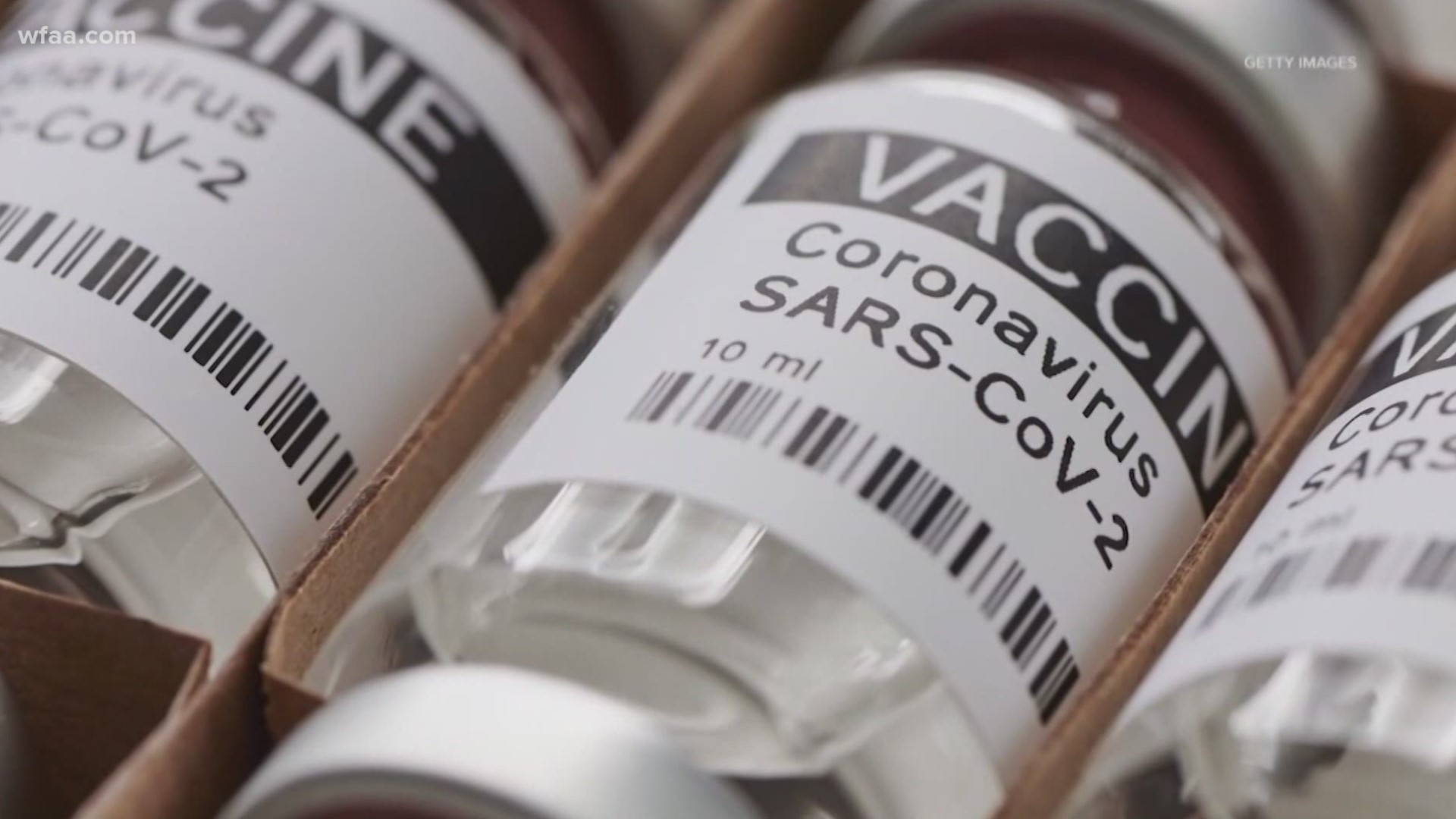Since a new phase of vaccinations got approved in Texas, pharmacy phone lines have blown up, and elderly and at-risk Texans have lined up in hopes of getting vaccines that remain in high demand but low supply.
Stephen Williams is Houston’s health director and a member of state’s vaccine allocation panel, which advises the state’s health commissioner on the order of who gets vaccinated.
“There are like 8 million people in 1B across the state,” Williams said. “Demand is not the problem here.”
The Phase 1A group is outlined on the website for the Department of State Health Services and describes healthcare employees who qualify as “working directly with patients” or “who interact with symptomatic patients,” plus long-term care residents and employees, and school nurses.
Texas Health Resources, Parkland, John Peter Smith and Children’s Health all confirmed they’re vaccinating all employees, including those not seeing patients or working from home.
Baylor Scott & White wouldn’t answer if they’re vaccinating all employees but wrote in a statement that, “All employees have been considered essential healthcare workers. More than 90% of our 49,000 team members are directly involved in patient care—they, along with our support staff, are essential to the operations of our 1,100 access points, especially during this extraordinary time.”
Cook Children’s declined to comment, and UT Southwestern never responded to emails and calls.
“1A would be those individuals who are directly serving patients who – I think it starts out by saying ‘those individuals who are treating COVID patients,’” Williams said.
Williams said it does include staff working in patient areas and facilities.
Children’s Health also said in an email it is vaccinating family members for all employees.
“We expanded our administration of the COVID-19 vaccine to household family members who are 18 years or older to team members, including volunteers, and physicians at Children’s Health,” the statement says. “By vaccinating those with whom we are closest in contact, we are adding another layer of protection for our organization and all those who entrust us with their care.”
Williams said family members shouldn’t be ahead of people 65 and older or with health issues.
“I think the average person would question that, especially when we’ve laid out a criteria that says that we want to target those individuals who are most vulnerable,” Williams said.
Texas Health said they feel they’re following the state’s rules.
“The state’s guiding principles include all healthcare workers, not just front-line hospital caregivers in tier 1A,” their statement reads. “The second tier of Phase 1A includes healthcare workers who support caregivers through their work and who could come in contact with patients who have COVID-19. Texas Health has a large breadth of healthcare settings including hospitals, physician offices and outpatient centers that are supported by central office employees.”
Parkland and JPS said it allows them to move staff into new roles.
“Those involved in direct patient care received the first doses and vaccines were opened to other staff in phases,” Parkland Health said in a statement. “But many other staff have contact with patients in our healthcare setting and that puts them at risk. In addition, many staff who would not normally be in contact with a lot of patients have been pressed into duties unrelated to their normal jobs.”
“Direct patient care workers were prioritized within 1A, and they received the first COVID-19 vaccine doses when they became available,” a JPS spokesperson wrote. “However, much of our staff at JPS has contact with patients and visitors outside of clinical care; patient care at a hospital includes registration, screening, language services, payment services, transportation, food services, parking and more. As the Level 1 Trauma Center, JPS interacts with a large number of people every day and must protect both patients and all those who care for them from infection. Additionally, in a time where staffing is stressed, vaccinating all staff allows us greater flexibility in scheduling and helps us better serve the volume of people in need that we are seeing each day.”
Dr. James McDeavitt is the dean of clinical affairs at Baylor College of Medicine, which is only counting frontline workers as part of group 1A.
“My opinion is a 1A provider is someone who is actually in clinical environments where they’re exposed to patients, not someone who is serving in a support role or working from home on a computer,” McDeavitt said.
McDeavitt said they have more 63,000 1B patients they want to prioritize ahead of other employees. Both Tarrant and Dallas County public health are counting healthcare workers as frontline employees.
McDeavitt said the bigger issue is a lack of communication from the state.
“The problem with our distribution strategy is that it’s a very decentralized strategy,” he said.
When asked for clarification on the definition, a DSHS spokesperson wrote in an email, “The 1A definition on our website is clear.”
“The more clarity and rules we can establish, I think the better off we’ll be,” McDeavitt said. “I just think it’s confusing and it’s evolving.”
Some hospitals are beginning to start Phase 1B for patients, but including all employees and family member means the waitlist in longer in North Texas.
“We’re talking about folks that are 65 years and older. We’re talking about folks over 16 with chronic conditions,” Williams said. “These people are likely to have more severe consequences if they get COVID.”

